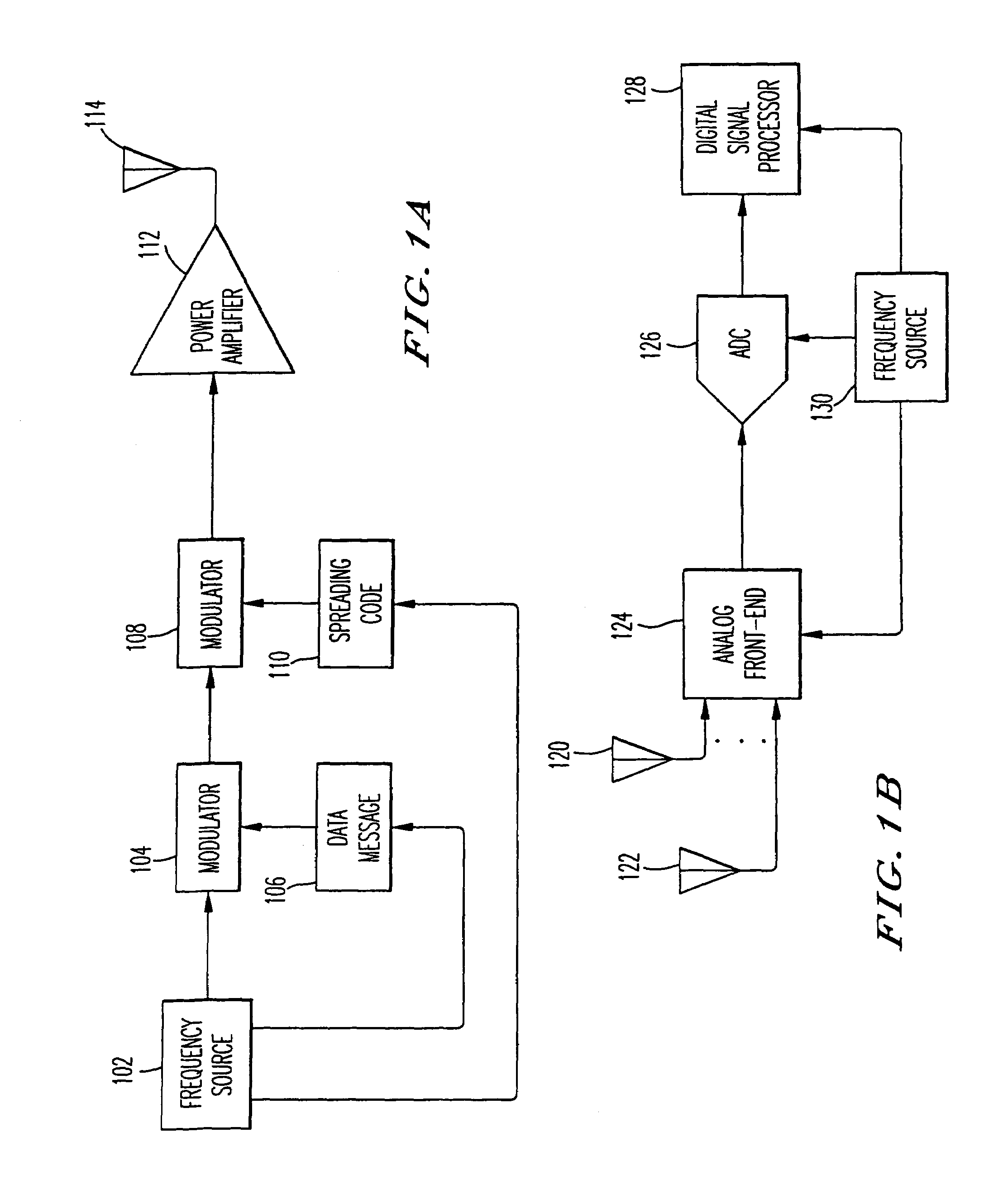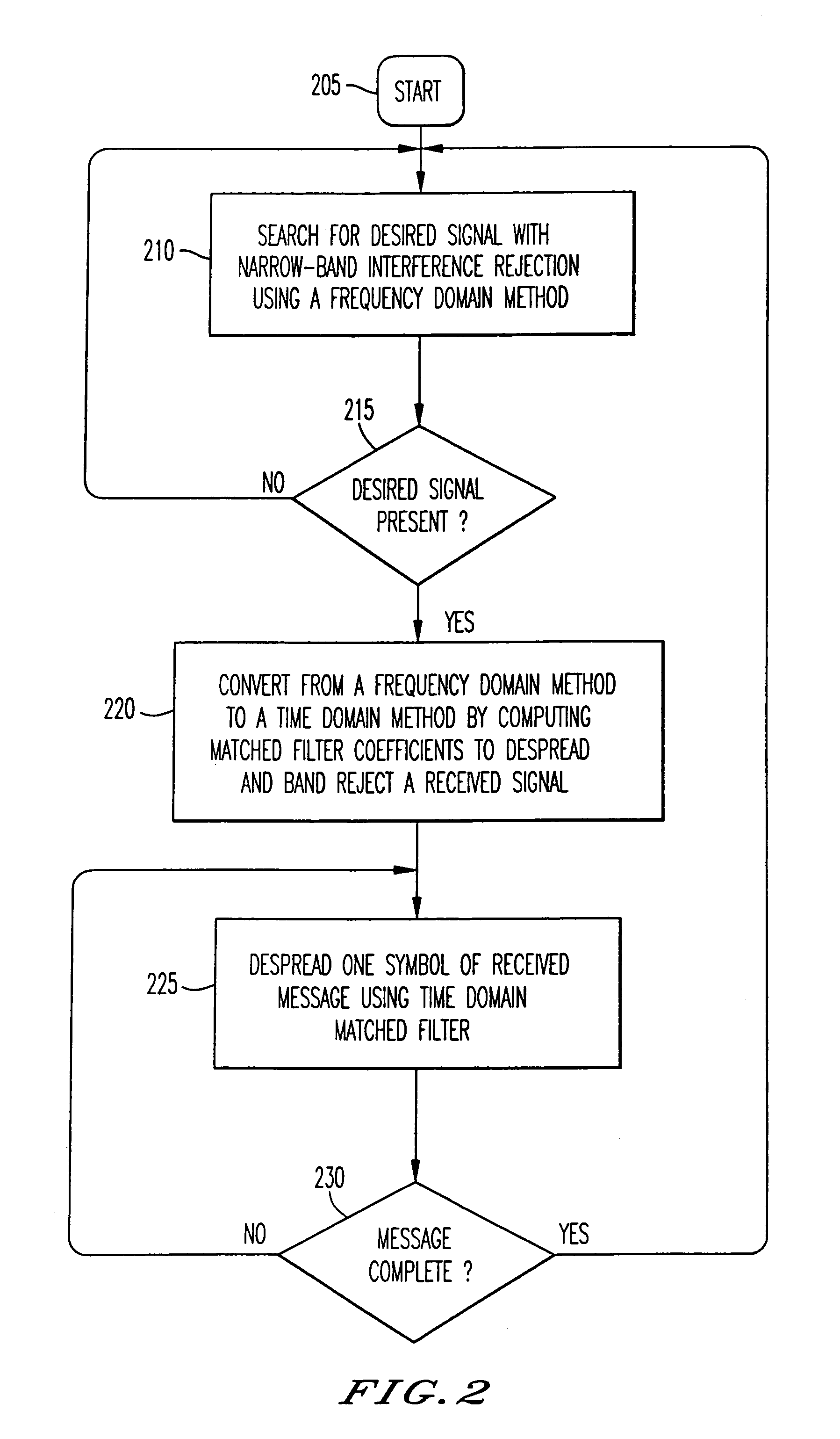Narrow-band interference rejecting spread spectrum radio system and method
a radio system and spread spectrum technology, applied in the field of spread spectrum (ss) communication, can solve problems such as interference with reception, transmission, transmitter and receiver, and insufficient process gain of the system, and achieve the effect of reducing the computing resources required
- Summary
- Abstract
- Description
- Claims
- Application Information
AI Technical Summary
Benefits of technology
Problems solved by technology
Method used
Image
Examples
Embodiment Construction
[0030]Referring now to the drawings, wherein the two least significant digits of reference numeral designations designate identical or corresponding parts throughout the several views and the third and fourth significant digits of the reference numeral designations refer to the respective drawing number, the present invention is next described.
[0031]The present invention resolves both frequency difference between a receiver and a transmitter and the spreading code delay (time difference) between a receiver and a transmitter. A transmitter is shown in FIG. 1A where a carrier wave generated by a frequency source 102 is modulated 104 by a message 106. The resultant signal is then modulated 108 by a spreading code 110 to achieve the benefits of spread spectrum communications. This signal is then amplified at amplifier 112 prior to transmission via antenna 114. Frequency source 102 will generate the carrier wave as well as control the timing of both the message 106 and the timing of the ...
PUM
 Login to View More
Login to View More Abstract
Description
Claims
Application Information
 Login to View More
Login to View More - R&D
- Intellectual Property
- Life Sciences
- Materials
- Tech Scout
- Unparalleled Data Quality
- Higher Quality Content
- 60% Fewer Hallucinations
Browse by: Latest US Patents, China's latest patents, Technical Efficacy Thesaurus, Application Domain, Technology Topic, Popular Technical Reports.
© 2025 PatSnap. All rights reserved.Legal|Privacy policy|Modern Slavery Act Transparency Statement|Sitemap|About US| Contact US: help@patsnap.com



